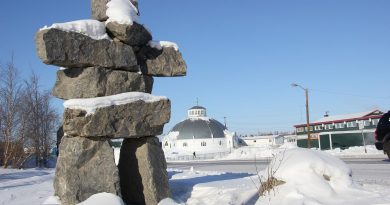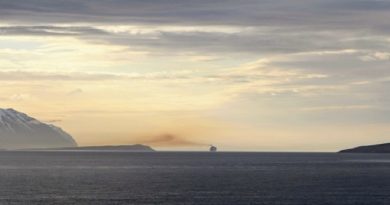Blog: Why Republicans’ Russia-envy in the Arctic is misplaced
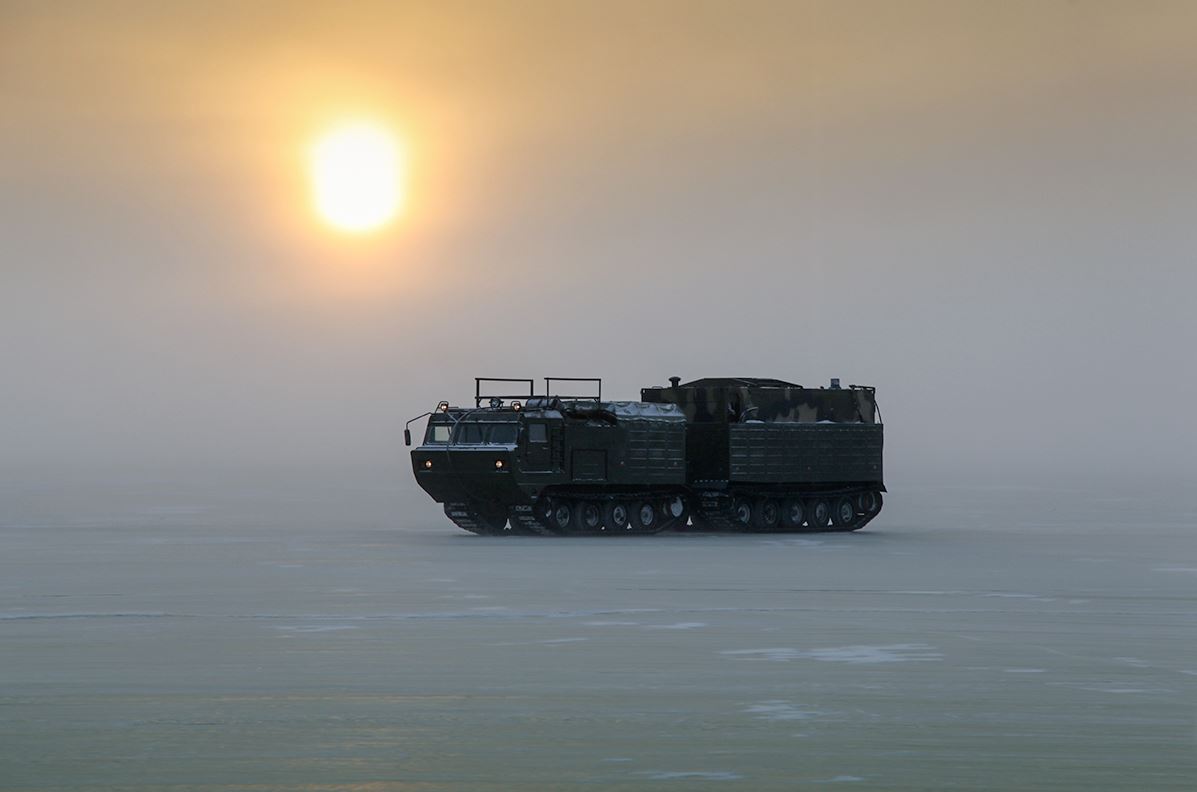
A flurry of headlines have recently declared that Russia is kicking its militarization efforts in the Arctic into high gear. Bombastically, UK tabloid The Daily Star screamed, “Russia moves to CONQUER the Arctic: Putin’s troops prep for VERY Cold War.”
More somberly, Foreign Policy described, “Here’s what Russia’s military build-up in the Arctic looks like,”complete with a Cold War-esque map of Russia’s military bases symbolized by red planes and missiles all pointed directly at the United States.
The map comes from the office of Senator Dan Sullivan (R-Alaska), who has spoken pointedly on the need for the U.S. to boost its Arctic abilities so that it can compete with Russia. Comparing the U.S.’ paltry two icebreakers to Russia’s 40 and counting, he admitted, “The highways of the Arctic are icebreakers…Russia has superhighways, and we have dirt roads with potholes.” Russia, it should be said, also has the Northern Sea Route connecting Europe and Asia, while the U.S. has the western end of the less geostrategic, harder to navigate Northwest Passage.
Sullivan is not the only Republican calling for greater investment in America’s Arctic capabilities. Representative Duncan Hunter (R-California), chairman of the House Committee on the Coast Guard and Maritime Transportation, sent a letter to the White House urging the U.S. to build more icebreakers. In a line that echoed Trump’s choice of vocabulary, Hunter wrote, “Russia is launching its biggest icebreaker — The Arktika. It should be of tremendous concern that next to this vessel, there is no equivalent in the world.” He added that Russia already has 40 vessels, with more coming online in the future, while the U.S. only has two.
The sudden concern for Russia’s icebreaking capabilities seems odd considering that no country has ever come close to it since the Soviets launched the nuclear icebreaker, Lenin, in 1959.
But the real question is, why does Russia have so many powerful icebreakers? Why is it building so much in the Arctic? Could they really be girding to attack the U.S., and if so, does American need to respond in kind?
The short answer is no.
Russia has always been more active in the Arctic than the U.S. for a combination of geographic, economic, and cultural reasons. The country has much more northern territory than the U.S., which is partly why the Arctic economy forms a much larger share of the country’s national economy.
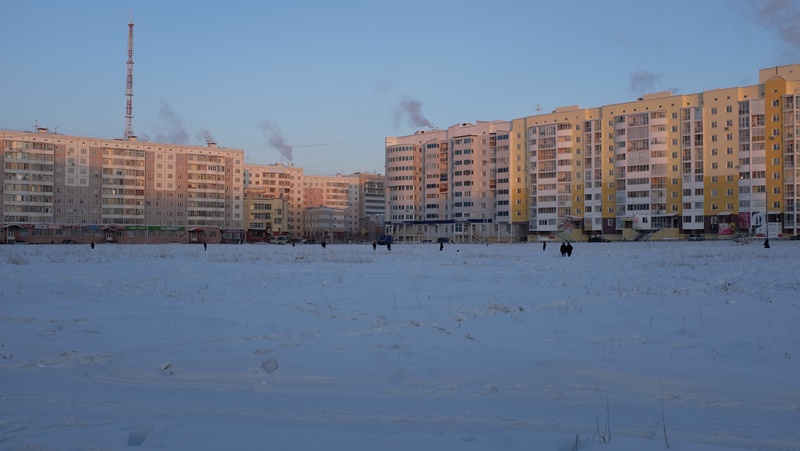
Throughout Russia’s history, a culture of imperial expansion has also motivated its drive to the north. The Cossacks’ rapid drive across Siberia, completed in 60 years, emerged in relation to an inability to push south across its steppe frontier into Central Asia due to tough opposition. Expansion was easier to the north and east across Siberia, where indigenous populations were sparser and resistance was weaker.
In the modern era, cities like Murmansk, Arkhangelsk, and Norilsk all testify to the Soviets’ enormous efforts to industrialize and urbanize the Russian Arctic. Even traditional practices became subsumed within the Soviet Arctic economy, with reindeer herding collectivized and industrialized, for instance.
Russia constitutes about half of the entire Arctic region, while the U.S. controls significantly less than that. By some accounts, the Russian Arctic accounts for 20% of the country’s GDP, and it would be even more if Tsar Alexander II hadn’t sold Alaska to the U.S. in 1867. Alaska, on the other hand, counts for a paltry 0.003% of U.S. GDPaccording to a back of the envelope calculation I did. In relative terms, Alaska has the 45th smallest economy of all 50 states (although it has the highest per capita GDP).
Here’s a map that illustrates how much bigger Russia’s Arctic economy is than Alaska’s from the Steffanson Arctic Institute.
As a primary example, Russia has advanced more in developing its Arctic oil and gas resources than any other country. In 2012, it opened the world’s first Arctic-class ice-resistant oil rig, Prirazlomnaya, in the Pechora Sea. Last month, the country opened three new Arctic pipelines, with President Vladimir Putin giving a speech by video link. The U.S., by contrast, has not opened an Arctic pipeline since the one and only Trans-Alaska Pipeline began operating in 1977.
Development is also proceeding apace at Russia’s Yamal Liquefied Natural Gas (LNG) project, which is receiving funding and cooperation from Chinese, Korean, and French partners. The LNG project sits in the middle of the Northern Sea Route, an Arctic thoroughfare used during Soviet times to supply the country’s numerous northern settlements. Today, the Kremlin hopes the Arctic shipping passage can be transformed into a global thoroughfare to connect Russia’s Arctic resources to markets in Europe and Asia.
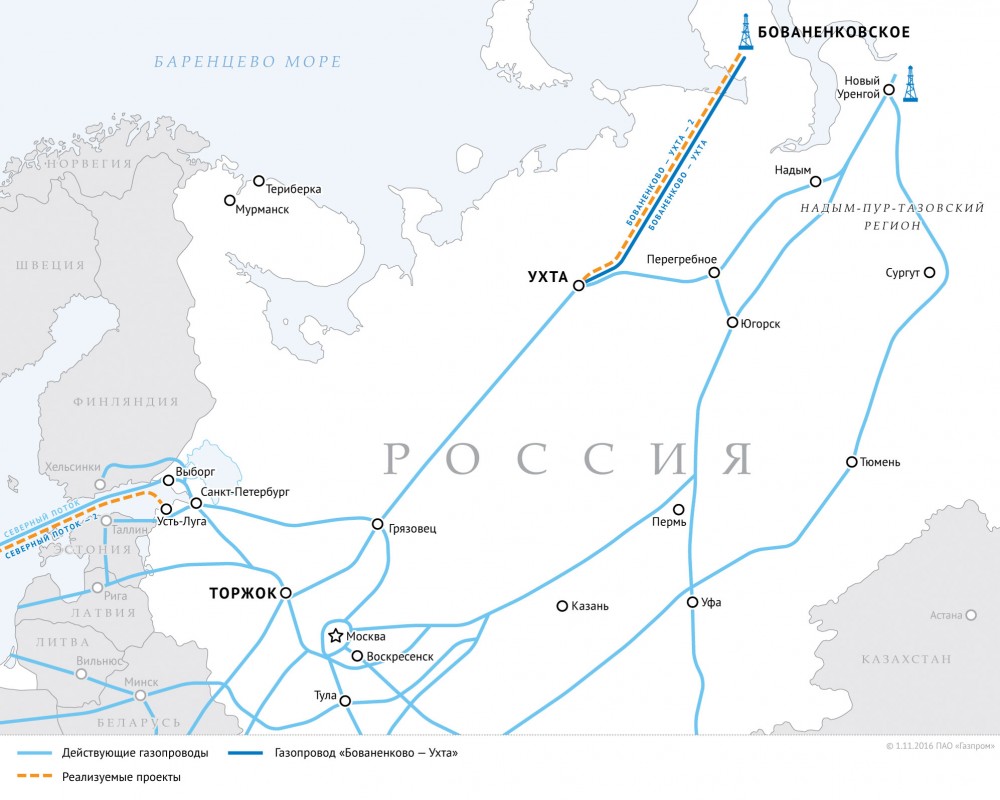
Russia is also carrying out much of this Arctic economic activity at a loss. The hope is that drilling in the Arctic will one day be profitable – and indeed, if the Russian economy continues to rely on oil, it is crucial that new sources be found. The Arctic could hold a massive amount of mineral wealth for Russia, especially in the way of natural gas, which could boost the national economy.
Given all of this activity, logically, Russia needs infrastructure and personnel to support and secure that activity – not to prepare for war in the Arctic. The country simply has a far greater national stake in supporting northern economic activity than the U.S. federal government. So why exactly do we need a fleet of icebreakers that can compare with Russia’s?
Even if Alaska, which the U.S. Geological Survey estimates has more oil than any other geological province in the Arctic, started churning out fossil fuels, it would likely have a minimal impact on the U.S. economy at large. Thus, since we simply don’t have as much coastline, as much economic activity, or even as many people in the Arctic as Russia, the U.S. probably doesn’t need to spend billions of dollars on icebreakers to pretend like we do.
The Russian media has been astutely covering the West’s obsession with the country’s Arctic development. In an interview with Russian internet portal and media outlet Rambler, Vladimir Batjuk, professor in the Faculty of World Economy and International Affairs at the Higher School of Economics, explained, “In my opinion, the Americans [do] not quite clearly understand why this is necessary. They have a very limited sector around Alaska and it is difficult to squeeze out something serious from it. A fight against Russia for its own sake does not make much sense for them. The only thing that interests them is the internationalization of the Northern Sea Route and the Northwest Passage.”
Constructing pricey icebreakers (Arktika is reckoned to cost $2 billion) is not the only investment Republicans are seeking in the Arctic. Senator Sullivan, along with the senior senator from Alaska, Lisa Murkowski, is also seeking to open up part of the Alaska National Wildlife Refuge to drilling. In January, the two senators introduced the Alaska Oil and Gas Production Act, Senate Bill 49, to permit oil and gas development in areas not classified as federal wilderness. The hope is that more drilling will revive the Alaskan economy, which is currently facing a $3 billion deficit.
Many Republicans and Alaskans believe that with President Trump in office, now is the time to act. Andy Mack, commissioner of the Alaska Department of Natural Resources, said to the Los Angeles Times, “Politically, in Washington, D.C., we have all the right folks in place.”
But even with individuals like former ExxonMobil CEO Rex Tillerson in charge of the State Department, having big oil inside the bureaucracy is no guarantee of development. As Trump’s travel ban highlighted, the judicial system can prove to be a major obstacle to executive action – and there’s no doubt that a huge fight would go down in court should Congress open up ANWR to drilling. Thus, despite having the “right folks in place” right now, there could be years of delays before ANWR opens up – and who knows who will be in the Oval Office then, and what executive orders the president then might sign.
This is where Russia and the U.S. differ. If the Russian government seeks to open up its Arctic to drilling, the state-owned companies of Rosneft and Gazprom will go ahead and do so – costs be damned, courts be damned. This mentality of development of the Arctic at all costs has its roots in the Soviets’ push to remake the Russian North into their own image – one of concrete buildings, radar arrays, and thousands of workers extracting oil, gas, nickel, diamonds, and all sorts of other minerals out of the frozen ground.

So if Republicans have Russia-envy when it comes to the Arctic, they should think twice. Yes, the Russian Arctic is vibrant and economically dynamic in parts. In the city of Arkhangelsk, you can enjoy watermelons from Georgia and the finest Russian caviar. In other parts of the Russian Arctic, you can still lose yourself in the cold caresses of the White Sea or the soft underbelly of the mossy tundra.
But the Russian Arctic has also been indelibly scarred by development that was too rushed and haphazard in its unveiling. Norilsk, a nickel mining city in the Russian Arctic, has been ignominiously deemed one of the ten most polluted places on Earth. Suicide rates among Russian reindeer herders, stripped of the ability to continue their traditional practices as they once did, are extremely high. These scars on the landscapes and societies are remnants from the Soviet push to conquer the Arctic through industrial development.
One has to wonder what will be the consequences of the contemporary push to open up the Arctic to the global economy via the development of oil and gas, shipping routes, and tourism. It’s not outside the realm of possibility that after the current boom in Arctic development comes to a close, the idea of the Arctic as a “last frontier” may no longer make sense if the ice-bound landscape has melted away. Without ice, the Arctic would just be another mineral-rich area peripheral to the global economy.
This is partly the concern motivating the $500 billion geo-engineering project that could “re-freeze” the Arctic. In a new paper, scientists have proposed to “enhance Arctic sea ice production by using wind power during the Arctic winter to pump water to the surface, where it will freeze more rapidly.” The fact that surreal study has attracted a wealth of media coverage speaks to a fear that we are at risk of losing the Arctic altogether.
While the Arctic melts away, many are rejoicing in the discovery of seven Earth-sized exoplanets. Surely, this is a cause for wonder, but it it also a cause for concern given the history of what humans have done when they encounter places at the edge of the known universe whether in the Arctic, at the bottom of the ocean, or in outer space. If we ever make it to these exoplanets, will the powers that be seek to remake these edges of the map in their own image? Or for once, will they leave the frontier alone?
Just the other week, another discovery that did not attract quite as much attention concerned the finding of “extraordinary” levels of pollutants at the bottom of the seven-mile deep Mariana Trench, one of the most remote places on Earth. This, however, shouldn’t be all too shocking. Trillions of microscopic bits of plastic have been found in Arctic icebergs. A Russian scientists studying beluga whales once told me that they had high levels of pollutants that could be traced to fertilizer used in India. Arctic indigenous peoples, due to their consumption of whales and other marine mammals, have some of the highest levels of PCP’s among humans.
Human presence is thus contaminating places people haven’t even inhabited. A part of me would not be surprised if a probe were to travel to one of these newfound exoplanets and find a trace of human life on its rocky surface. On the bright side, scientists think some exoplanets have polar ice caps. I suppose that these could serve as a sort of Arctic 2.0 if we need an Earth 2.0
Correction: Alaska was sold to the U.S. by Tsar Alexander II not Tsar Peter the Great as stated in a previous version of this story.
Correction: The Cossacks’ drive across Siberia took 60 years, not across Russia as stated in a previous version of this story.
Correction: The imperial expansion was easier to the north and east across Siberia, and not west, as stated in a previous version of this story.
This post first appeared on Cryopolitics, an Arctic News and Analysis blog.
Related stories from around the North:
Canada: What does closure of Canadian Arctic port mean for shipping?, Blog by Mia Bennett
China: Chinese company mulls more Arctic shipping, Barents Observer
Finland: Winds challenging Finland’s icebreakers despite record low Baltic ice, Yle news
Iceland: Calls for action at Arctic shipping conference, Alaska Dispatch News
Norway: Arctic shipping – The myths, the realities & the challenges ahead, Eye on the Arctic
Russia: Icebreaker escorts up 100% in Russia, The Independent Barents Observer
Sweden: Swedish icebreakers gear up for Arctic role, Radio Sweden
United States: U.S. Arctic strategy puts Canada and Russia on notice, Alaska Public Radio Network


